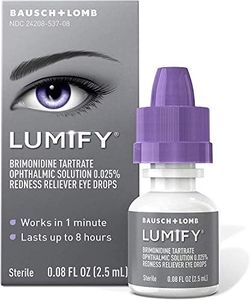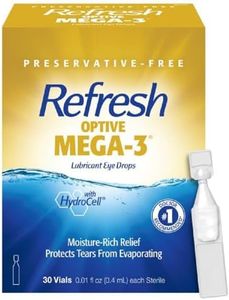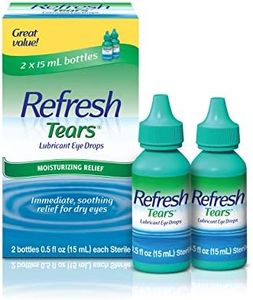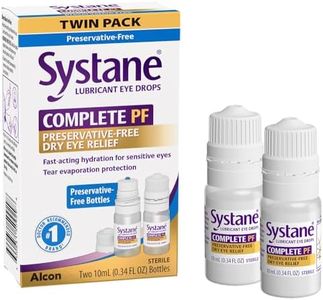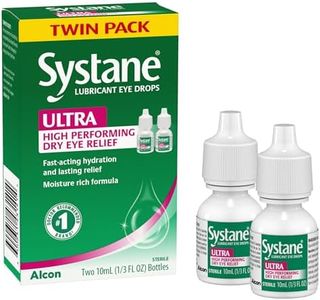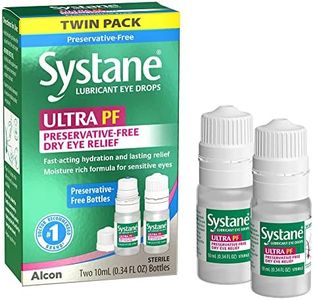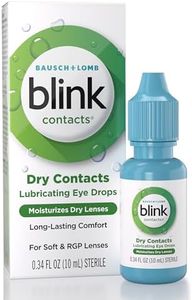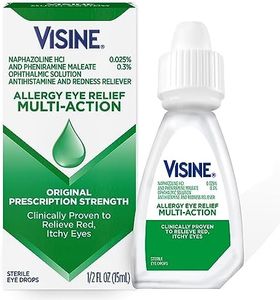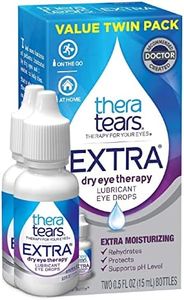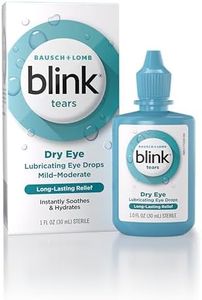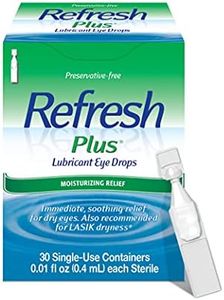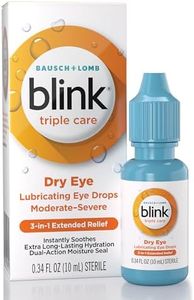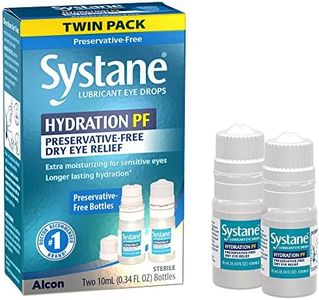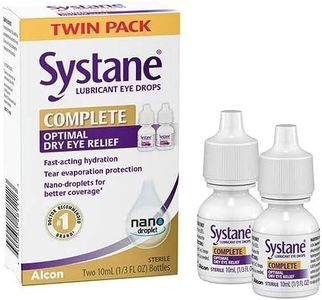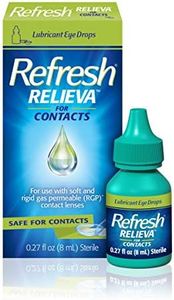10 Best Eye Drops 2025 in the United States
Our technology thoroughly searches through the online shopping world, reviewing hundreds of sites. We then process and analyze this information, updating in real-time to bring you the latest top-rated products. This way, you always get the best and most current options available.

Our Top Picks
Winner
LUMIFY Redness Reliever Eye Drops 0.08 Ounce (2.5mL)
Most important from
35673 reviews
LUMIFY Redness Reliever Eye Drops, developed by Bausch and Lomb, are designed to effectively reduce redness in the eyes, revealing their natural brilliance. A standout feature is its unique active ingredient, brimonidine, which allows it to selectively target redness without some of the common side effects found in other eye drops. This makes LUMIFY a suitable choice for individuals seeking quick relief from red eyes, as it works within a minute and provides relief for up to 8 hours.
One of the main advantages of LUMIFY is that it is FDA approved and free from bleach and dyes, ensuring safety for users. Additionally, it is recommended by eye care professionals, which adds to its credibility. The small size (0.08 Fl Oz) makes it easy to carry around in a purse or pocket, allowing for convenient use whenever needed, especially for those who wear contact lenses.
LUMIFY is specifically aimed at addressing redness and may not serve users looking for broader eye care benefits, such as dryness or irritation relief, as it does not have moisturizing properties. Also, being an over-the-counter product, it may not be suitable for everyone; those with certain eye conditions or sensitivities should consult with a healthcare professional before use. The drops are effective for redness relief, but their unique formulation may not fit everyone's preference for eye drops, especially since some users may prefer preservative-free options or different viscosities. If you're primarily concerned about red eyes and need a quick solution, LUMIFY can be a fantastic choice, but be aware of its limitations for more comprehensive eye care needs.
Most important from
35673 reviews
Refresh Optive MEGA-3 Lubricant Eye Drops Preservative-Free Artificial Tears, 0.01 fl oz (0.4 mL), 30 Single-Use Containers
Most important from
21909 reviews
The Refresh Optive MEGA-3 Lubricant Eye Drops are designed to provide fast-acting and long-lasting relief for dry, irritated eyes. These eye drops are preservative-free, making them a good option for those with sensitive eyes or who frequently use eye drops. The triple-action formula lubricates, hydrates, and protects the eyes from tear evaporation, which can be beneficial for those experiencing discomfort from dryness or exposure to elements like wind or sun. The inclusion of flaxseed oil, which contains omega-3s, and antioxidants, enhances the soothing properties of these drops. The patented HydroCell technology in these drops helps maintain hydration, offering advanced hydration benefits.
The single-use vials are convenient and hygienic, making them easy to use on the go without worrying about contamination. This product is suitable for temporary relief and protection against further irritation. However, it is important to note that these drops come in small 0.01 fl oz containers, which might be seen as a drawback for some users due to the need to frequently replace them. Additionally, while the single-use packaging ensures sterility, it might generate more waste compared to multi-use bottles.
The product is from a trusted brand with a long history and is FSA & HSA eligible, which could be a financial benefit for some users. These eye drops are particularly beneficial for those looking for a reliable and convenient solution for dry eyes, especially those who prefer preservative-free options.
Most important from
21909 reviews
Refresh Tears, Lubricant Eye Drops, 2 Bottles .5 fl oz (15 ml)
Most important from
30217 reviews
Refresh Tears Lubricant Eye Drops are designed for anyone struggling with dry eyes, offering effective and immediate relief from discomfort. One of the standout features is that these drops mimic natural tears, which helps to provide soothing hydration. This can be particularly beneficial for those who spend long hours in front of screens or in environments that contribute to eye dryness. The formula is gentle, making it suitable for frequent use throughout the day, which is a significant advantage for individuals who need consistent moisture.
Another strong point is their compatibility with contact lenses. If you wear contacts, this is a practical choice, as it allows for convenient relief without needing to remove your lenses.
The packaging includes two 0.5 fl oz bottles, which is handy for keeping one at home and taking the other on the go. However, the small size might not last long for those who use them frequently. Refresh Tears serves well for daily dry eye relief, especially for contact lens wearers, but those needing longer-lasting options or higher viscosity drops may want to explore other alternatives.
Most important from
30217 reviews
Buying Guide for the Best Eye Drops
Choosing the right eye drops can make a significant difference in managing eye discomfort, dryness, or other eye-related issues. It's important to understand the different types of eye drops available and how they can address your specific needs. Here are some key specifications to consider when selecting eye drops, along with explanations to help you make an informed decision.FAQ
Most Popular Categories Right Now
